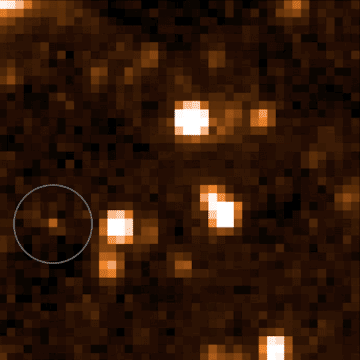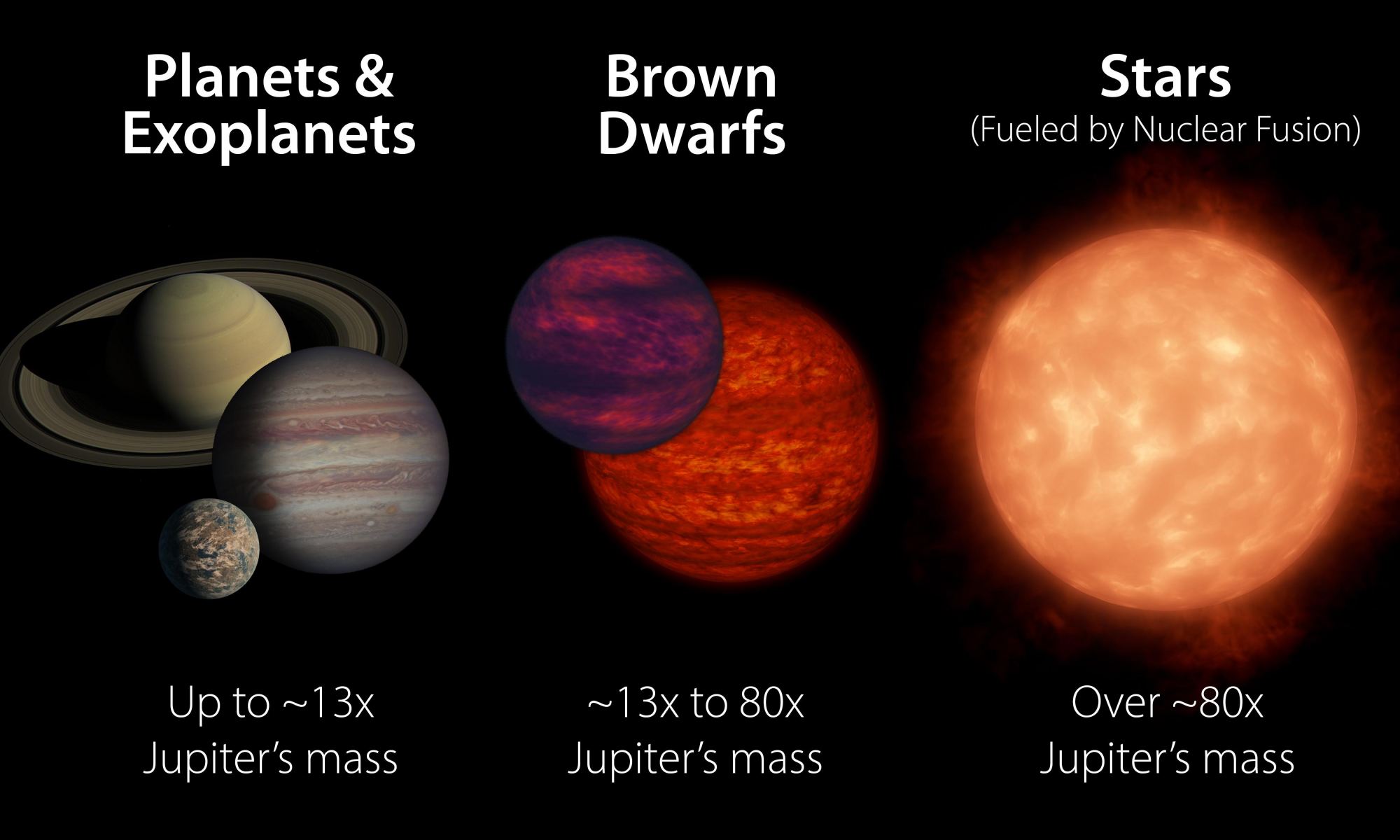Brown dwarfs are strange things. They are in the middle ground between planets and stars. A star is defined as an object massive enough for hydrogen to fuse into helium into its core, while a planet is too small for core fusion to occur. It seems a simple distinction until you learn about fusion. Anything with a mass below about 13 Jupiters is too small for fusion to occur, and is thus a planet. If your mass is about about 80 Jupiters, then you can fuse helium and are therefore a star. But if your mass is between 13 and 80 Jupiters, things get interesting. You can’t fuse hydrogen to shine brightly, but you can fuse lithium into other elements. This is known as lithium burning. It doesn’t provide lots of energy, but it is technically nuclear fusion.
Because of this effect, brown dwarfs can be difficult to identify. Large and young brown dwarfs can be as hot and bright as a small star, while older or smaller brown dwarfs look like large planets. This is because, unlike stars, brown dwarfs cool down over time. They are often brightest at infrared wavelengths, and so they are often identified by their infrared spectrum.

But one odd aspect about brown dwarfs is that they seem to be rarer than they should be. When you count the number of stars in the local universe, yellow stars such as our Sun are more common than giant stars, and red dwarf stars are much more common than yellow ones. You would expect then that brown dwarfs are more common than red dwarfs. But so far we’ve found fewer brown dwarfs than even yellow stars. Part of that is due to the fact that brown dwarfs are cool and dim, but even when we take that into consideration we should see more of them. It’s known as the brown dwarf desert problem.
But an accidental discovery might be the solution to this mystery. It was discovered by NASA’s Near-Earth Object Wide-Field Infrared Survey Explorer (NEOWISE), and named “The Accident.” It is a brown dwarf that didn’t show up in sky surveys looking for brown dwarfs because it doesn’t look like a brown dwarf. Brown dwarfs can be identified by their infrared spectra, but each spectrum depends on the composition of the brown dwarf as well as its temperature. The spectrum of The Accident is odd because it’s dim where you’d expect it to be bright, and bright where it’s typically dim.

The spectrum of The Accident suggests that it contains very little methane, and that could mean that it’s extremely old. Methane is a molecule of carbon and hydrogen, and although hydrogen has been around since the cosmic beginning, carbon only appeared after the first generation of stars had died. Thus, the spectrum suggests that this brown dwarf formed during that first generation period. We’ve known that early generation brown dwarfs likely exist, but we figured they are rare. But The Accident is only 50 light-years away from us, so either it was an extraordinarily lucky find or this type of brown dwarf is fairly common. This could explain the brown dwarf desert. Countless brown dwarfs are out there, but they have unusual spectra so we’ve overlooked them.
The discovery of a single brown dwarf isn’t enough to settle the matter. But now that we know what old brown dwarfs can look like, we can look for more. And this time what we find will be no accident.
Reference: Kirkpatrick, J. Davy, et al. “The Enigmatic Brown Dwarf WISEA J153429. 75-104303.3 (aka “The Accident”).” The Astrophysical Journal Letters 915.1 (2021): L6.


Error in the 2nd sentence, sir. Hydrogen is built into Helium (at a temperature of millions of degrees), not the other way around.
Looks like some of that missing baryonic mass has been found. These dimmer brown dwarfs will be very hard to spot beyond 10 light years. I wonder what WFIRST’s detection range will be for these in 2025?